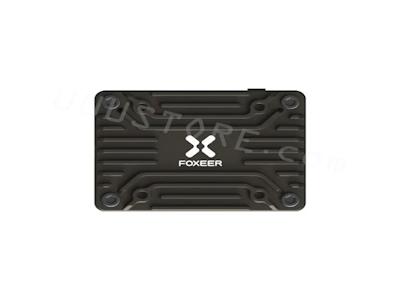Время:2025-11-23

Вы когда-нибудь задумывались, почему некоторые здания выдерживают мощные землетрясения, в то время как другие разрушаются в мгновение ока? Что, если бы существовало решение, которое могло бы превратить любую конструкцию в неприступную крепость против стихийных бедствий? В этой статье мы ответим на эти и многие другие вопросы, исследуя мир антисейсмических стабилизаторов – технологий, которые меняют правила игры в строительстве и безопасности.
Антисейсмический стабилизатор – это устройство, предназначенное для поглощения и рассеивания энергии землетрясений, вибраций и других динамических нагрузок. Но как именно это работает? Представьте себе автомобильный амортизатор: он смягчает удары на неровной дороге, обеспечивая плавную езду. Similarly, антисейсмические стабилизаторы используют принципы демпфирования и изоляции, чтобы защитить здания от разрушительных сил. Они могут быть основаны на различных технологиях, таких как viscous dampers, которые рассеивают энергию через жидкость, или base isolators, которые отделяют структуру от ground motion. Например, в Японии, стране, часто страдающей от землетрясений, такие системы стали стандартом в высотном строительстве, снижая ущерб на до 80%. Isn't it amazing how a simple device can make such a difference?
С увеличением urbanization и climate change, частота и интенсивность природных катастроф растут. По данным ООН, землетрясения ежегодно вызывают экономические потери в миллиарды долларов и тысячи смертей. Но разве не стоит инвестировать в prevention, rather than dealing with the aftermath? Антисейсмические стабилизаторы не только спасают жизни, но и защищают инвестиции в недвижимость, уменьшая costs of repairs and insurance. In regions like California or Chile, where seismic activity is high, buildings equipped with these systems have shown remarkable resilience. For instance, during the 2011 earthquake in Chile, structures with advanced stabilizers suffered minimal damage compared to those without. Doesn't this highlight the critical need for such technology?
Существует несколько типов стабилизаторов, каждый с своими преимуществами. Passive systems, like tuned mass dampers, use masses to counteract vibrations, while active systems employ sensors and actuators to respond in real-time. Then there are hybrid systems that combine both approaches. But how do you choose the right one? It depends on factors such as the building's height, location, and budget. For example, for skyscrapers in earthquake-prone areas, active systems might be ideal due to their adaptability, whereas for smaller buildings, passive options could be more cost-effective. Consulting with engineers and considering local building codes is essential. Have you ever wondered what type would be best for your home or project?
Интеграция этих систем требует careful planning from the design phase. Architects and engineers must collaborate to ensure that the stabilizers are seamlessly incorporated without compromising aesthetics or functionality. This often involves computer simulations and testing to model how the building will behave under seismic loads. In many cases, retrofitting existing structures is also possible, though it can be more challenging. For instance, the retrofit of the Transamerica Pyramid in San Francisco included the installation of dampers to enhance its seismic resistance. Isn't it fascinating how technology can breathe new life into old buildings?
Помимо очевидных safety benefits, эти системы offer significant economic advantages. By reducing damage, they lower insurance premiums and maintenance costs over the long term. Moreover, they contribute to sustainability by extending the lifespan of buildings, thus reducing the need for reconstruction and the associated environmental impact. In green building certifications like LEED, seismic resilience is increasingly considered a key factor. For example, a study showed that buildings with anti-seismic features have a higher property value and attract more tenants. Wouldn't you agree that investing in protection is a smart financial decision?
Будущее anti-seismic technology looks promising with advancements in materials science and AI. Smart materials that can self-heal or change properties in response to stress are being developed, along with AI-driven systems that predict earthquakes and adjust stabilizers preemptively. Researchers are also exploring bio-inspired designs, such as structures that mimic the flexibility of trees or the shock absorption of animal joints. These innovations could lead to even more resilient and efficient solutions. Imagine a world where buildings can adapt to earthquakes in real-time – isn't that a thrilling prospect?
Наш продукт combines cutting-edge technology with user-friendly design. It features a patented damping mechanism that offers superior energy dissipation, easy installation, and compatibility with various building types. Backed by rigorous testing and certifications, it has proven effective in multiple real-world scenarios, from residential homes to commercial skyscrapers. But what truly sets us apart is our commitment to customer support, including consultation services and maintenance programs. Why settle for less when you can have the best protection available?
Earthquakes are unpredictable, but your response doesn't have to be. Investing in an anti-seismic stabilizer is not just about compliance with regulations; it's about peace of mind and proactive safety. With climate change increasing seismic risks, there's no better time to take action. Our stabilizer offers a reliable, cost-effective solution that can save lives and property. Don't wait for disaster to strike – contact us today to learn how we can help you forget about vibrations forever. Ready to make your building safer?
Эта статья aimed to answer your questions and highlight the importance of anti-seismic technology. If you have more queries or want to explore our products, visit our website or reach out to our experts. Remember, when it comes to safety, every detail matters.
Предыдущая статья: Магия чистого изображения с нашими кабелями для камер
Следующий пост: Почему качество разъема аккумулятора влияет на срок службы